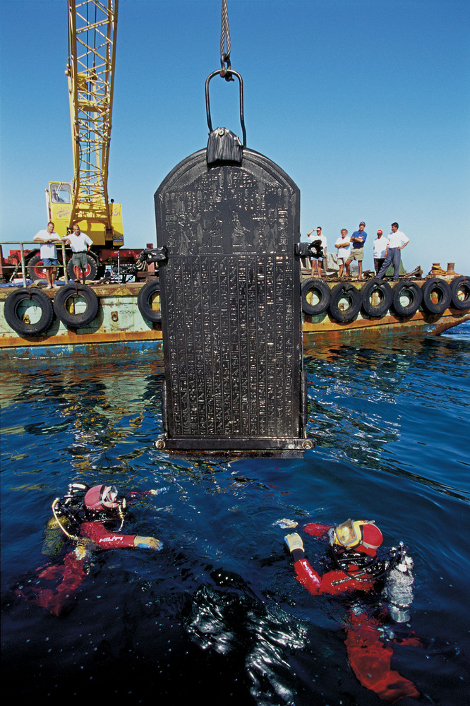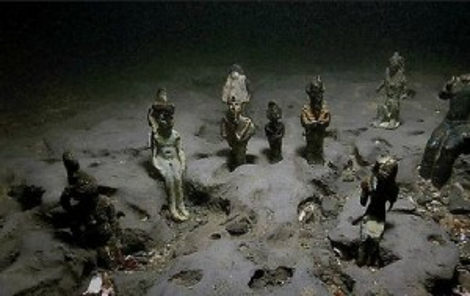1775-1791: U.S. Currency

To finance the American Revolution, the
Continental Congress printed the new nation's first paper money. Known
as "continentals," the fiat money notes were issued in such quantity
they led to inflation, which, though mild at first, rapidly accelerated
as the war progressed. Eventually, people lost faith in the notes, and
the phrase "Not worth a continental" came to mean "utterly worthless."
1791-1811: First Attempt at Central Banking

At the urging of then Treasury Secretary
Alexander Hamilton, Congress established the First Bank of the United
States, headquartered in Philadelphia, in 1791. It was the largest
corporation in the country and was dominated by big banking and money
interests. Many agrarian minded Americans uncomfortable with the idea
of a large and powerful bank opposed it. When the bank’s 20-year charter
expired in 1811 Congress refused to renew it by one vote.
1816-1836: A Second Try Fails

By 1816, the political climate was once
again inclined toward the idea of a central bank; by a narrow margin,
Congress agreed to charter the Second Bank of the United States. But
when Andrew Jackson, a central bank foe, was elected president in 1828,
he vowed to kill it. His attack on its banker-controlled power touched a
popular nerve with Americans, and when the Second Bank’s charter
expired in 1836, it was not renewed.
1836-1865: The Free Banking Era
State-chartered banks and unchartered
“free banks” took hold during this period, issuing their own notes,
redeemable in gold or specie. Banks also began offering demand deposits
to enhance commerce. In response to a rising volume of check
transactions, the New York Clearinghouse Association was established in
1853 to provide a way for the city’s banks to exchange checks and settle
accounts.
1863: National Banking Act
During the Civil War, the National
Banking Act of 1863 was passed, providing for nationally chartered
banks, whose circulating notes had to be backed by U.S. government
securities. An amendment to the act required taxation on state bank
notes but not national bank notes, effectively creating a uniform
currency for the nation. Despite taxation on their notes, state banks
continued to flourish due to the growing popularity of demand deposits,
which had taken hold during the Free Banking Era.
1873-1907: Financial Panics Prevail

Although the National Banking Act of
1863 established some measure of currency stability for the growing
nation, bank runs and financial panics continued to plague the economy.
In 1893, a banking panic triggered the worst depression the United
States had ever seen, and the economy stabilized only after the
intervention of financial mogul J.P. Morgan. It was clear that the
nation’s banking and financial system needed serious attention.
1907: A Very Bad Year
In 1907, a bout of speculation on Wall
Street ended in failure, triggering a particularly severe banking
panic. J.P. Morgan was again called upon to avert disaster. By this
time, most Americans were calling for reform of the banking system, but
the structure of that reform was cause for deep division among the
country’s citizens. Conservatives and powerful “money trusts” in the
big eastern cities were vehemently opposed by “progressives.” But there
was a growing consensus among all Americans that a central banking
authority was needed to ensure a healthy banking system and provide for
an elastic currency.
1908-1912: The Stage is Set for Decentralized Central Bank

The Aldrich-Vreeland Act of 1908, passed
as an immediate response to the panic of 1907, provided for emergency
currency issue during crises. It also established the national Monetary
Commission to search for a long-term solution to the nation’s banking
and financial problems. Under the leadership of Senator Nelson Aldrich,
the commission developed a banker-controlled plan. William Jennings
Bryan and other progressives fiercely attacked the plan; they wanted a
central bank under public, not banker, control. The 1912 election of
Democrat Woodrow Wilson killed the Republican Aldrich plan, but the
stage was set for the emergence of a decentralized central bank.
1912: Woodrow Wilson as Financial Reformer

Though not personally knowledgeable
about banking and financial issues, Woodrow Wilson solicited expert
advice from Virginia Representative Carter Glass, soon to become the
chairman of the House Committee on Banking and Finance, and from the
Committee’s expert advisor, H. Parker Willis, formerly a professor of
economics at Washington and Lee University. Throughout most of 1912,
Glass and Willis labored over a central bank proposal, and by December
1912, they presented Wilson with what would become, with some
modifications, the Federal Reserve Act.
1913: The Federal Reserve System is Born

From December 1912 to December 1913, the
Glass-Willis proposal was hotly debated, molded and reshaped. By
December 23, 1913, when President Woodrow Wilson signed the Federal
Reserve Act into law, it stood as a classic example of compromise—a
decentralized central bank that balanced the competing interests of
private banks and populist sentiment.
1914: Open for Business
Before the new central bank could begin
operations, the Reserve Bank Operating Committee, comprised of Treasury
Secretary William McAdoo, Secretary of Agriculture David Houston, and
Comptroller of the Currency John Skelton Williams, had the arduous task
of building a working institution around the bare bones of the new law.
But, by November 16, 1914, the 12 cities chosen as sites for regional
Reserve Banks were open for business, just as hostilities in Europe
erupted into World War I.
1914-1919: Fed Policy During the War

When World War I broke out in mid-1914,
U.S. banks continued to operate normally, thanks to the emergency
currency issued under the Aldrich-Vreeland Act of 1908. But the greater
impact in the United States came from the Reserve Banks’ ability to
discount bankers acceptances. Through this mechanism, the United States
aided the flow of trade goods to Europe, indirectly helping to finance
the war until 1917, when the United States officially declared war on
Germany and financing our own war effort became paramount.
1920s: The Beginning of Open Market Operations

Following World War I, Benjamin Strong,
head of the New York Fed from 1914 to his death in 1928, recognized that
gold no longer served as the central factor in controlling credit.
Strong’s aggressive action to stem a recession in 1923 through a large
purchase of government securities gave clear evidence of the power of
open market operations to influence the availability of credit in the
banking system. During the 1920s, the Fed began using open market
operations as a monetary policy tool. During his tenure, Strong also
elevated the stature of the Fed by promoting relations with other
central banks, especially the Bank of England.
1929-1933: The Market Crash and the Great Depression
During the 1920s, Virginia
Representative Carter Glass warned that stock market speculation would
lead to dire consequences. In October 1929, his predictions seemed to be
realized when the stock market crashed, and the nation fell into the
worst depression in its history. From 1930 to 1933, nearly 10,000 banks
failed, and by March 1933, newly inaugurated President Franklin Delano
Roosevelt declared a bank holiday, while government officials grappled
with ways to remedy the nation’s economic woes. Many people blamed the
Fed for failing to stem speculative lending that led to the crash, and
some also argued that inadequate understanding of monetary economics
kept the Fed from pursuing policies that could have lessened the depth
of the Depression.
1933: The Depression Aftermath
In reaction to the Great Depression,
Congress passed the Banking Act of 1933, better known as the
Glass-Steagall Act, calling for the separation of commercial and
investment banking and requiring use of government securities as
collateral for Federal Reserve notes. The Act also established the
Federal Deposit Insurance Corporation (FDIC), placed open market
operations under the Fed and required bank holding companies to be
examined by the Fed, a practice that was to have profound future
implications, as holding companies became a prevalent structure for
banks over time. Also, as part of the massive reforms taking place,
Roosevelt recalled all gold and silver certificates, effectively ending
the gold and any other metallic standard.
1935: More Changes to Come

The Banking Act of 1935 called for
further changes in the Fed’s structure, including the creation of the
Federal Open Market Committee (FOMC) as a separate legal entity, removal
of the Treasury Secretary and the Comptroller of the Currency from the
Fed’s governing board and establishment of the members’ terms at 14
years. Following World War II, the Employment Act added the goal of
promising maximum employment to the list of the Fed’s responsibilities.
In 1956 the Bank Holding Company Act named the Fed as the regulator of
bank holding companies owning more than one bank, and in 1978 the
Humphrey-Hawkins Act required the Fed chairman to report to Congress
twice annually on monetary policy goals and objectives.
1951: The Treasury Accord

The Federal Reserve System formally
committed to maintaining a low interest rate peg on government bonds in
1942 after the United States entered World War II. It did so at the
request of the Treasury to allow the federal government to engage in
cheaper debt financing of the war. To maintain the pegged rate, the Fed
was forced to give up control of the size of its portfolio as well as
the money stock. Conflict between the Treasury and the Fed came to the
fore when the Treasury directed the central bank to maintain the peg
after the start of the Korean War in 1950.
President Harry Truman and Secretary of
the Treasury John Snyder were both strong supporters of the low interest
rate peg. The President felt that it was his duty to protect patriotic
citizens by not lowering the value of the bonds that they had purchased
during the war. Unlike Truman and Snyder, the Federal Reserve was
focused on the need to contain inflationary pressures in the economy
caused by the intensification of the Korean War. Many on the Board of
Governors, including Marriner Eccles, understood that the forced
obligation to maintain the low peg on interest rates produced an
excessive monetary expansion that caused inflation. After a fierce
debate between the Fed and the Treasury for control over interest rates
and U.S. monetary policy, their dispute was settled resulting in an
agreement known as the Treasury-Fed Accord. This eliminated the
obligation of the Fed to monetize the debt of the Treasury at a fixed
rate and became essential to the independence of central banking and how
monetary policy is pursued by the Federal Reserve today.
1970s-1980s: Inflation and Deflation
The 1970s saw inflation skyrocket as
producer and consumer prices rose, oil prices soared and the federal
deficit more than doubled. By August 1979, when Paul Volcker was sworn
in as Fed chairman, drastic action was needed to break inflation’s
stranglehold on the U.S. economy. Volcker’s leadership as Fed chairman
during the 1980s, though painful in the short term, was successful
overall in bringing double-digit inflation under control.
1980: Setting the Stage for Financial Modernization
The Monetary Control Act of 1980
required the Fed to price its financial services competitively against
private sector providers and to establish reserve requirements for all
eligible financial institutions. The act marks the beginning of a period
of modern banking industry reforms. Following its passage, interstate
banking proliferated, and banks began offering interest-paying accounts
and instruments to attract customers from brokerage firms. Barriers to
insurance activities, however, proved more difficult to circumvent.
Nonetheless, momentum for change was steady, and by 1999 the
Gramm-Leach-Bliley Act was passed, in essence, overturning the
Glass-Steagall Act of 1933 and allowing banks to offer a menu of
financial services, including investment banking and insurance.
1990s: The Longest Economic Expansion

Two months after Alan Greenspan took
office as the Fed chairman, the stock market crashed on October 19,
1987. In response, he ordered the Fed to issue a one-sentence statement
before the start of trading on October 20: “The Federal Reserve,
consistent with its responsibilities as the nation’s central bank,
affirmed today its readiness to serve as a source of liquidity to
support the economic and financial system.” The 10-year economic
expansion of the 1990s came to a close in March 2001 and was followed by
a short, shallow recession ending in November 2001. In response to the
bursting of the 1990s stock market bubble in the early years of the
decade, the Fed lowered interest rates rapidly. Throughout the 1990s,
the Fed used monetary policy on a number of occasions including the
credit crunch of the early 1990s and the Russian default on government
securities to keep potential financial problems from adversely affecting
the real economy. The decade was marked by generally declining
inflation and the longest peacetime economic expansion in our country’s
history.
September 11, 2001

The effectiveness of the Federal Reserve
as a central bank was put to the test on September 11, 2001 as the
terrorist attacks on New York, Washington and Pennsylvania disrupted
U.S. financial markets. The Fed issued a short statement reminiscent of
its announcement in 1987: “The Federal Reserve System is open and
operating. The discount window is available to meet liquidity needs.” In
the days that followed, the Fed lowered interest rates and loaned more
that $45 billion to financial institutions in order to provide stability
to the U.S. economy. By the end of September, Fed lending had returned
to pre- September 11 levels and a potential liquidity crunch had been
averted. The Fed played the pivotal role in dampening the effects of the
September 11 attacks on U.S. financial markets.
January 2003: Discount Window Operation Changes
In 2003, the Federal Reserve changed its
discount window operations so as to have rates at the window set above
the prevailing Fed Funds rate and provide rationing of loans to banks
through interest rates.
2006 and Beyond: Financial Crisis and Response

During the early 2000s, low mortgage
rates and expanded access to credit made homeownership possible for more
people, increasing the demand for housing and driving up house prices.
The housing boom got a boost from increased securitization of
mortgages—a process in which mortgages were bundled together into
securities that were traded in financial markets. Securitization of
riskier mortgages expanded rapidly, including subprime mortgages made to
borrowers with poor credit records.
http://end-artemi-sorra-cyprus.blogspot.gr/2013/12/history-of-federal-reserve.html



 Η Διώρυγα του Δία
Η Διώρυγα του Δία 















































